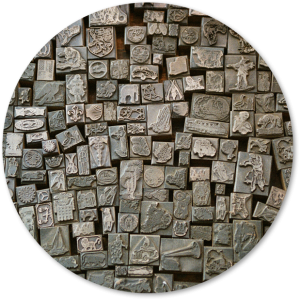The “Next Big Thing” series: Digital Transformation
Beware! No. 7 of the “Next Big Thing” blog post series is probably going to be at the heart of all the big business disruptions to come:
“Digital Business”
as a term has more or less become a substitute for the formerly heavily stressed “Industry 4.0”. Digital Business can best be described by a couple of examples illustrating how every business – without exception – will be disrupted by the huge innovative potential rolling along:
Example No. 1 – Retail and Education
School notifies the parents of a boy that he needs a certain educative material by tomorrow; they do that by means of a private message to the parents coming from the school’s facebook profile. The boy’s mother investigates through her mobile phone where the particular material can be purchased, connects to the store chain by means of a mobile app and requests availability information. The store responds with availability and price (through their app) also informs that the particular item has to be sent from a remote outlet and requests confirmation for the purchase and delivery. The mother responds with payment data and the school’s address for target delivery whereas the store chain triggers delivery of the item to the nearest train station, notifies the train operating company that a parcel needs to be delivered by tomorrow to the respective address whereas the train company in turn arranges for delivery to take place to the school’s nearest train station and from there by a drone directly to the school.
Example No. 2 – Weather and Insurance
A terrible thunderstorm destroys a house’s window. The respective sensors thoroughly detect the reason for the breakage of glass not to be from human intervention but from bad weather conditions and notifies the smart home automation gateway of what has happened. The gateway holds police, hospital and insurance contact information as well as necessary private customer IDs. Location address is derived via GPS positioning. The gateway self-triggers a notification and remediation workflow with the insurance company, which in turn assesses the incident to be a valid insurance case, triggers a repair order with an associated window glassworks company. The glassworks company fits the order into their schedule as it is treated an emergency under the given circumstances, rushes to the given location, repairs the windows, the workers report back to the insurance via mobile app and the insurance closes the case. All this happens without any human intervention other than final approval by the house’s owner that everything is OK again.
Example No. 3 – Holiday and Healthcare
The wearable body control device of an elderly lady records asynchronous heartbeat also slowly decelerating. The pattern is maintained within the device as being a situation of life endangering heart condition, hence the device commences transfer of detailed health monitoring data via the lady’s mobile phone to her children on the one hand and to her doctor in charge on the other hand. Both parties have (by means of device configuration) agreed to confirm the reception of data within 5 minutes after start of transmission. As none of this happens (because the kids are on holiday and the doctor is busy doing surgery) the device triggers notification of the nearest ambulance, transmits the patterns of normal health condition plus current condition and includes name, location, health insurance and nearest relatives data as well as the electronic apartment access key. The ambulance’s customer request system notifies the doctor in charge as well as the lady’s children that they’re taking over the case, an ambulance rushes to location, personal opens via mobile phone using the received electronic key, finds the lady breathing short and saves her life by commencing respective treatment immediately.
Fictious?
Well – maybe, today. But technology for all this is available and business models around it have begun to mature.
What these examples show – besides that they all encompass the integration of Things with several or all aspects of the Nexus of Forces discussed earlier in this article series – is an aspect essential to understanding “Digital Business” and that immense digitalization of our daily life: “Digital Business” is nothing else than the seamless (mean it;. literally: s-e-a-m-l-e-s-s) connection of humans, businesses and things (as in the IoT definition). “Digital Business” is a merger of physical and digital worlds!
In turn, this means plain simply, that there will be no business whatsoever that goes without software. Businesses already penetrated by software will experience increasing software, automation and integration challenges and businesses that haven’t yet introduced software into their models will face an increased challenge doing so, as well as to integrate with the digital world around them. Essentially for nothing else than just for staying in business.
{the 8th issue of this blog post series covers a way to approach all those challenges through creating a true services ecosystem for the enterprise; and as it’s the last it also wraps up and concludes}
{feature image found on http://marketingland.com/}




